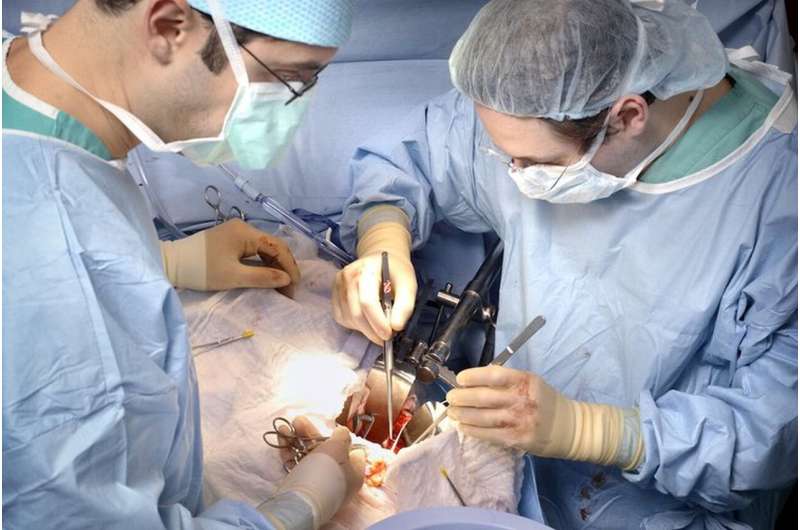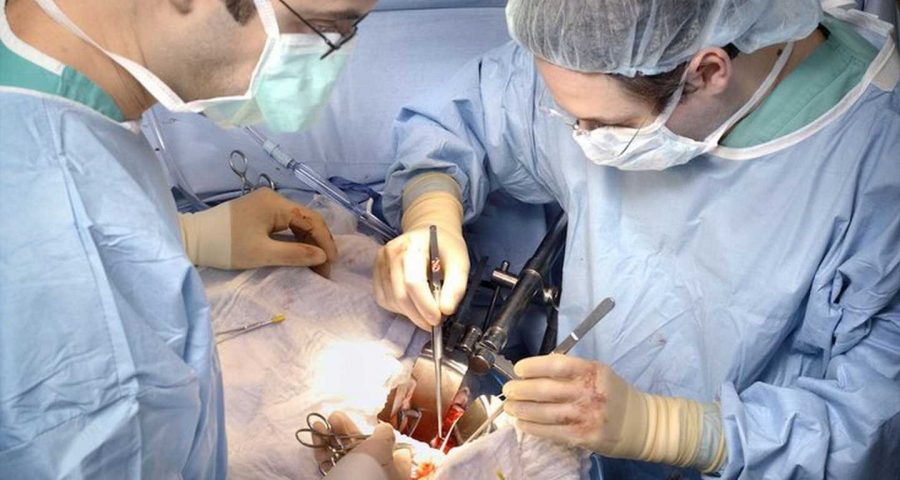
A new analysis of national kidney transplant and organ discard data concludes that too many deceased donor organs with acute kidney injury (AKI) may be needlessly going to waste because of a change in the way kidneys are evaluated.
The Johns Hopkins Medicine-led study, published Dec. 12, 2021, in the American Journal of Transplantation, shows that the number of stage 3 AKI kidneys (where kidney function may be up to 50% less efficient) transplanted in the United States has increased significantly overall in the last decade. However, the researchers who conducted the analysis say more can and should be done to further reduce the number of these organs still being discarded.
“This is a half-glass-full or half-glass-empty situation,” said study lead author Chirag Parikh, M.D., Ph.D. M.B.B.S., director of the Division of Nephrology at the Johns Hopkins University School of Medicine. “Optimistically, you can look at it as we’re transplanting more kidneys because we are harvesting 2,000 more, yet we’re still discarding 44% of stage 3 kidneys. We can do better and wipe out this kidney transplant shortage just by using AKI kidneys.”
The findings build upon a 2020 study that provided strong evidence harvested deceased donor kidneys with AKI can be transplanted safely and effectively, and don’t have to be rejected outright by transplant registries and surgeons. That finding, along with those from the new analysis, argue that wider use of such organs can dramatically bolster efforts to reduce the drastic shortage of organs available for transplant in the United States.
AKI is defined as a sudden reduction in kidney function that can cause waste products to build up in the blood, in contrast to chronic, long-term kidney damage. AKI severity is measured using a standardized three-tier scale of symptoms experienced by patients. Stage 3 AKI ranks as the most severe kidney injury, often marked by seizures, coma and confusion.
Every deceased donor kidney considered for transplant is given a quality score by the nationally standardized Kidney Donor Profile Index (KDPI), a numerical assessment involving 10 donor factors. The score estimates how long the kidney is likely to function when compared with other kidneys. While the goal is to transplant the healthiest kidneys, research has shown that many patients can still benefit from AKI transplants by relieving them from dialysis or ending years of waiting for a donor organ.
“We know that transplanting AKI kidneys benefits recipients greatly,” says Parikh. “We undertook this study because we wanted to better understand the patterns of AKI kidney use, and whether transplant behaviors were changed based on updates to KDPI.”
The KDPI was first introduced in 2012 and revised in 2014 under the Kidney Allocation System established under the federal Organ Procurement and Transplantation Network (OPTN). It is calculated based on the following donor status factors: age, height, weight, cause of death, history of diabetes and high blood pressure, exposure to the hepatitis C infection, race/ethnicity, and last serum creatinine (a measure of kidney function) levels. Increase in serum creatinine, as seen with AKI, increases the KDPI score. A high KDPI score typically leads to more discard of organs by transplant centers.
For the new analysis, data from 93,341 deceased kidney donors were identified by the OPTN system between 2010 and 2020. The researchers calculated how many kidneys were donated, discarded and used, and then broke down the results by the trends they found in AKI stages.
From the organ donor pool studied, 172,410 kidneys were harvested and 34,984 were discarded. A total of 36% of donors had experienced AKI in some stage, a percentage that remained consistent between 2010 and 2020.
While the number of kidneys procured with stages 1 and 2 AKI remained similar throughout the decade (both hovering around 90%–95%), the harvesting of stage 3 AKI kidneys increased from 51% in 2010 to 80% in 2020. Transplant centers that used stage 3 AKI kidneys also increased from 36% to 56%.
However, while the number of transplants with stage 3 AKI kidneys increased by about 2,000 over the decade studied, the researchers found that the discard rate for these kidneys increased from 41.4% to 44% over the same period.
According to the U.S. Department of Health and Human Services, some 95,000 Americans with kidney failure are awaiting donor organs. As reported by the U.S. Centers for Disease Control and Prevention, nearly 9,000 of these patients drop off the waiting list each year because they cannot get a kidney in time, resulting in death or deteriorating health that makes transplantation no longer possible. Currently, the national discard or rejection rate for all potential donor kidneys is approximately 18%—however, for AKI kidneys, it jumps to nearly 30%.
Parikh says the results of this study show further efforts are needed to revise the KDPI scoring system by modifying components that will encourage clinicians to optimize the use of AKI kidneys for transplantation. For example, the baseline creatinine can be use used in the KDPI instead of the terminal creatinine in donors with AKI.
Source: Read Full Article
